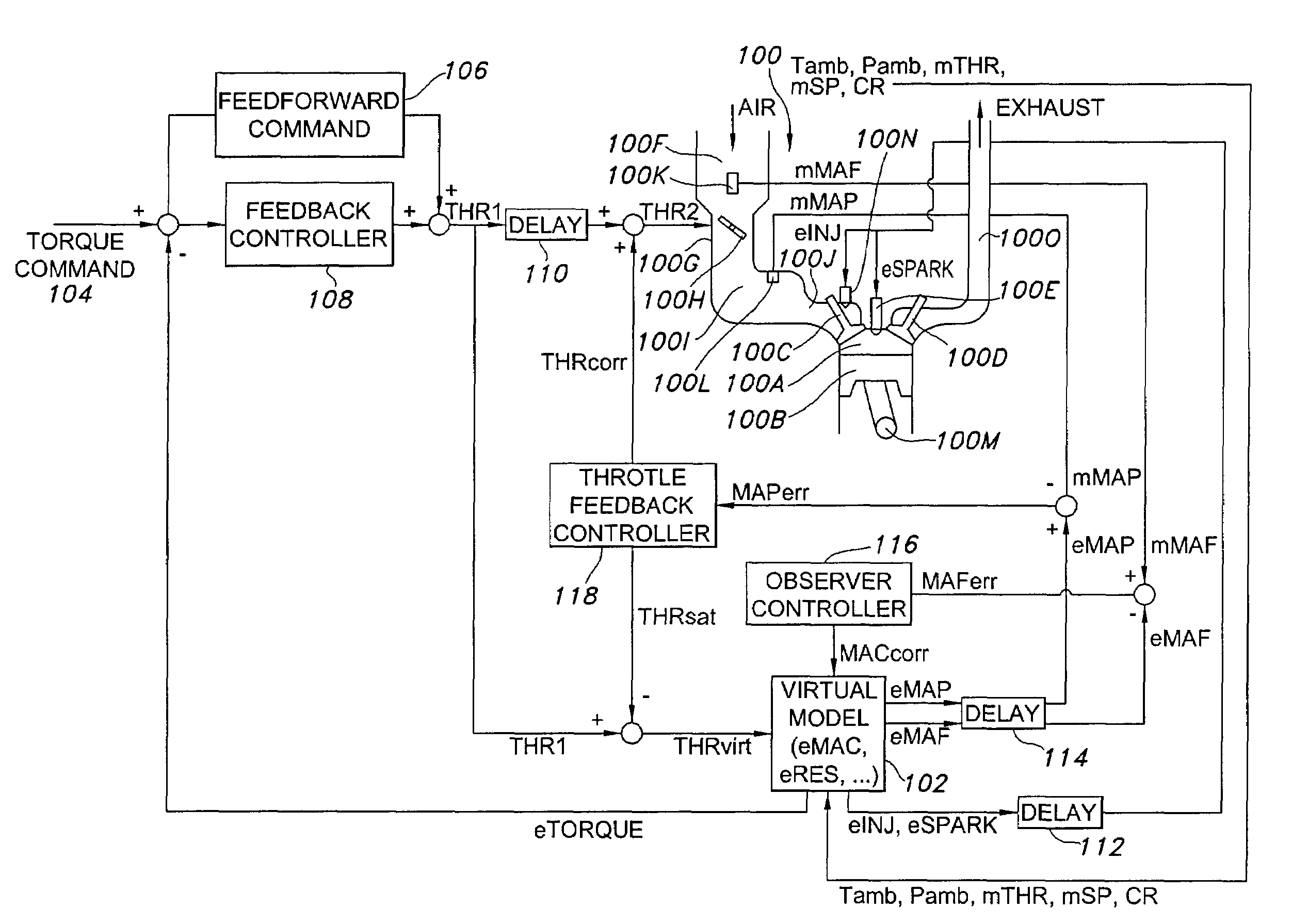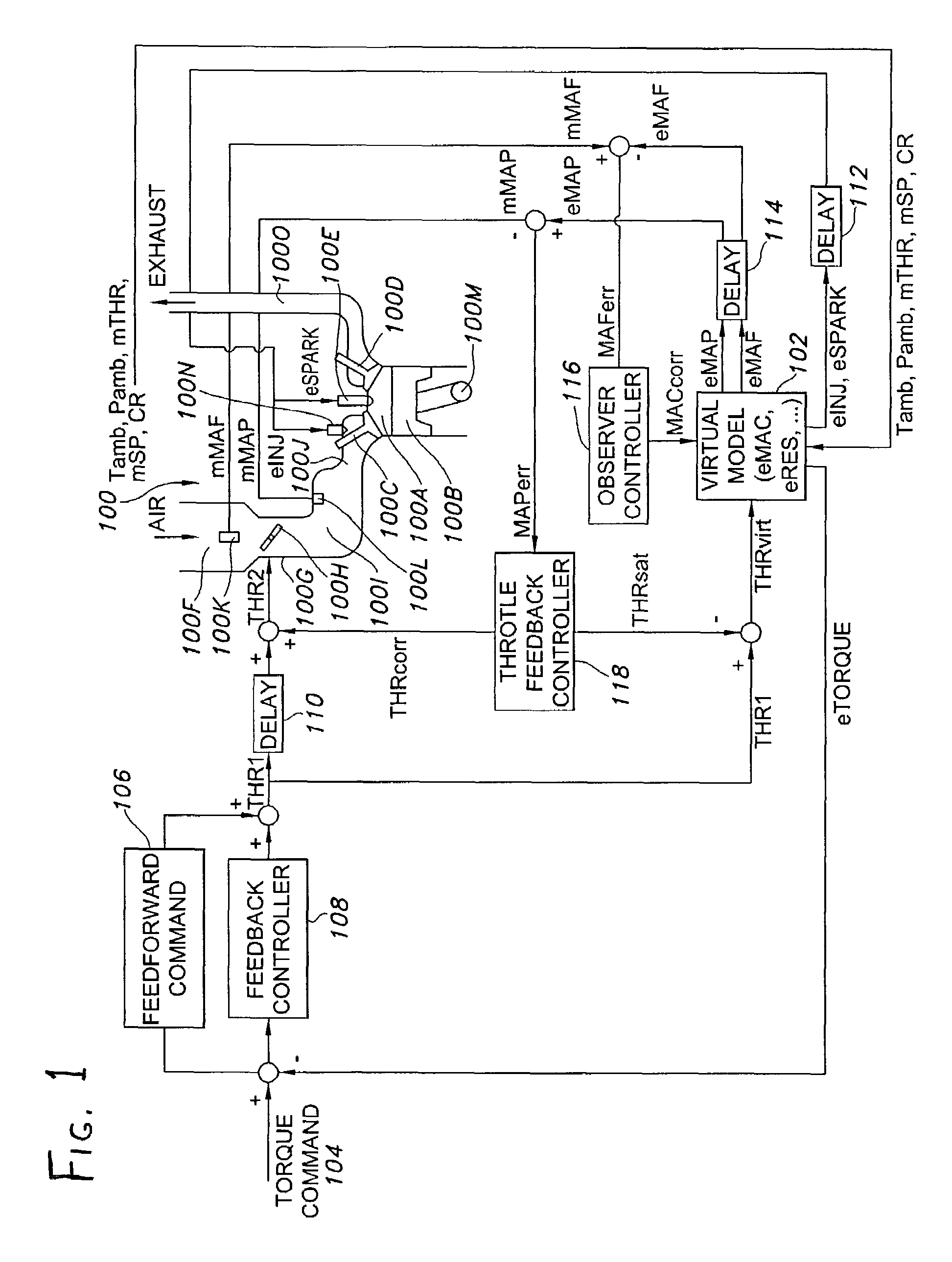Internal combustion engine control system
a control system and internal combustion engine technology, applied in the direction of electric control, brake systems, instruments, etc., can solve the problems of increasing the complexity of engine control strategies, affecting the actual performance of the cylinder, and affecting the operation of the cylinder, so as to reduce the error, reduce the error, and improve the effect of tracking actual cylinder performan
- Summary
- Abstract
- Description
- Claims
- Application Information
AI Technical Summary
Benefits of technology
Problems solved by technology
Method used
Image
Examples
Embodiment Construction
[0018]Referring to FIG. 1 for a depiction of an exemplary version of the invention, an internal combustion engine is depicted at 100. The engine 100 includes a cylinder 100A wherein a piston 100B reciprocates, with an intake valve 100C, exhaust valve 100D, and spark plug 100E being located opposite the piston 100B. Air is supplied to the intake valve 100C via an intake system 100F, which includes a throttle body 100G wherein a throttle 100H is located, an intake manifold 100I, and a runner 100J leading from the manifold 100I to the intake valve 100C. A mass air flow sensor (MAF sensor) 100K is located adjacent the throttle 100H, and a manifold absolute pressure sensor (MAP sensor) 100L is located within the intake manifold 100I. Fuel is supplied to the cylinder 100A over a desired portion of an engine cycle (i.e., over a 720 degree rotation of the crankshaft 100M) by a fuel injector 100N, which is here depicted adjacent the intake valve 100C in a port-style injection arrangement. An...
PUM
 Login to View More
Login to View More Abstract
Description
Claims
Application Information
 Login to View More
Login to View More - R&D
- Intellectual Property
- Life Sciences
- Materials
- Tech Scout
- Unparalleled Data Quality
- Higher Quality Content
- 60% Fewer Hallucinations
Browse by: Latest US Patents, China's latest patents, Technical Efficacy Thesaurus, Application Domain, Technology Topic, Popular Technical Reports.
© 2025 PatSnap. All rights reserved.Legal|Privacy policy|Modern Slavery Act Transparency Statement|Sitemap|About US| Contact US: help@patsnap.com


